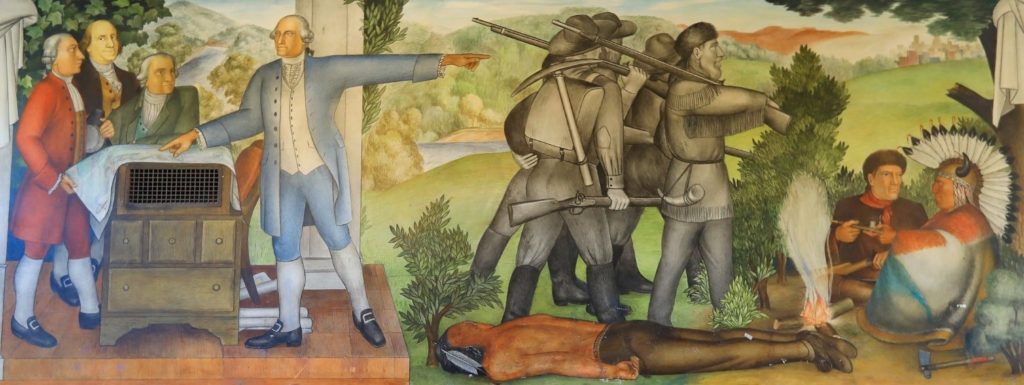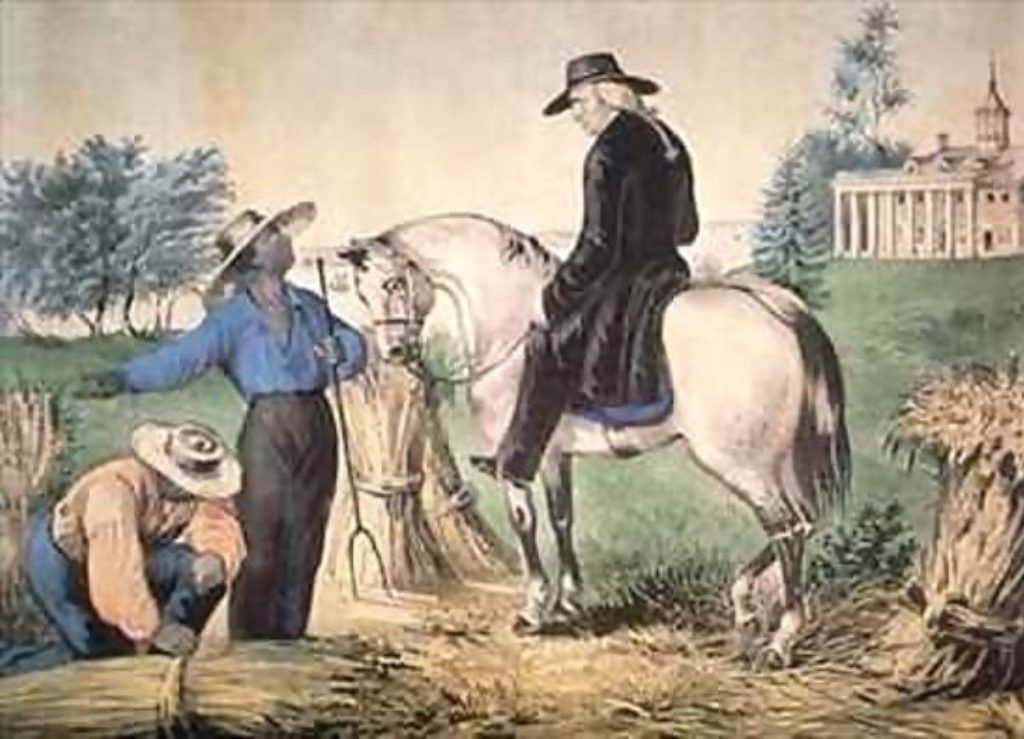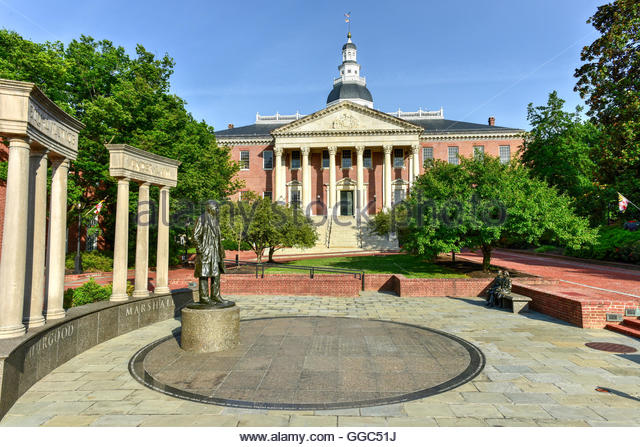And Then The African American Calvary Arrived (Update on August 21, 2019)
Just when you thought it couldn’t get any more bizarre, the world often surprises.
The New York Times (August 14, 2019) reports that the San Francisco School Board voted 4 to 3 to rescind its decision to “paint over” the Arnautoff murals and instead to “hide them from view.” Critics still complain that rather than “burning the books,” this decision means that the books are saved but reading them is prohibited.
Why the change of heart? The George Washington High School Alumni Association protested as did alumnus and celebrity activist Danny Glover; the NAACP held a press conference to denounce the decision and Alice Walker, the acclaimed author of “The Color Purple,” weighed in as well. Their consistent message: Don’t sugar coat history but use it as a teaching moment.
The “painting over” contract was a little over $600,000 while the “hide them from view” contract is now over $800,000. It appears that the present decision will not be the end of the story. The real solution is to replace the seven nincompoops who make up the San Francisco School Board.
Meanwhile, Roger Taney resides in a Maryland warehouse gathering dust since no one, much less celebrities, have spoken up for him.


So what is your mental picture of George Washington? Mine is him at the bow of a boat on his way to surprise and conquer the Hessians at Trenton; stepping down as President after two terms so as to not resemble a king; the apocryphal stories of chopping down the cherry tree but refusing to lie and tossing a coin across the Rappahannock River.
That wasn’t the Washington whom Victor Arnautoff painted. Arnautoff was a Russian émigré, a dedicated communist who was employed by the Works Progress Administration (WPA) during the 1930s and painted various murals including 13 in George Washington High School in San Francisco. The Arnautoff murals depict Washington as a slave owner and as directing “manifest destiny” in the genocide of Indians ‒ not exactly the picture of Washington that most of us were given in grade school.
Arnautoff’s politics were shared by many during the Great Depression which seem to demonstrate that capitalism was a failed system. Arnautoff was interrogated by investigators for the House Un-American Activities Committee (HUAC) and was the subject of demands that he be fired by Stanford when he compared Richard Nixon to Senator Joseph McCarthy, the censured and disgraced red baiter. Stanford, to its credit, refused.
So one would think that Arnautoff’s work would be safe in San Francisco which has a reputation of being an extremely liberal political environment. Think again.
The San Francisco School Board just voted unanimously to paint over 80-year-old murals in George Washington High School because they were deemed “offensive” as they depicted George Washington owning slaves and pushing for a westward expansion showing a dead Indian. Recently, there was a public hearing where pro-mural and anti-mural speakers were given one minute apiece to express their opinion. By all accounts, the hearing was “window dressing” as the school board voted immediately to either place panels over the murals or to paint them with an expected cost of over $600,000.
The witnesses were very animated. One pro mural speaker said it was the equivalent of Nazi book burning. One anti-mural speaker declared that the murals were “racist” and that she determined whether one was racist by asking a simple question: are you for reparations or not? (I think my answer puts me in the “wrong” camp.)
The most interesting thing about this controversy is that the vote was unanimous. It seems that we have lost our ability to admit that our history is messy and want to blot out things that we don’t like.
Across the country in blue state Maryland, the statue of Roger Taney has been placed in storage. Taney was a prominent Maryland politician, the brother-in-law of Francis Scott Key, the first Catholic to serve on the Supreme Court and the only Marylander to serve as Chief Justice.
Taney authored the Dred Scott decision in 1857. That decision determined that slaves could not invoke the jurisdiction of the Federal Court because they were not citizens and never could be citizens because they were slaves. There was some (but not much) logic to this in that slaves were counted as 3/5 of a free person in the United States Constitution for the purpose of determining the number of representatives in Congress from the slave states. Dred Scott may be the worst decision in Supreme Court history.
Taney’s statue was on the lawn of the Maryland State House near the “front door.” Taney was almost taken down 25 years ago but, in a compromise, a memorial to Thurgood Marshall was erected at the “back door” of the state house. Marshall was the Baltimore lawyer who had successfully argued Brown versus the Board of Education and was subsequently a long serving member of the Supreme Court.
The Marshall memorial, complete with sculptures, is truly memorable and it occupies an entire square directly adjacent to the “back door” of the State House. In his memorial, Marshall stands under columns reading “Equal Justice Under Law” (which is also the inscription over the main door of the Supreme Court) and is being gazed upon by school children seated on benches. However, the “back door” is the majestic entrance to the State House complete with cascading marble steps and impressive columns. 99% of the people entering the State House go in the “back door.” The “front door” looks like the servants entrance.

Just as Taney was once “saved” by Marshall, Arnautoff was once “saved” by a mural painted by Dewey Crumpler in 1974 entitled “Multi Ethnic Heritage” which showed Native American, African-American and other minorities in heroic situations.
So Arnautoff and Taney are now consigned to the dustbins of history. It is said that the “victors” write our history. Today, however, the “victors” are not a conquering army but a vocal group who are “offended” by this or that.
Here’s an idea; leave Arnautoff’s murals up and use them and Dewey Crumpler’s 1974 mural to speak about American history with the students at the school. Don’t cover up slavery and genocide. Talk about it instead.
And why not have Taney gazing up at Marshall, and for years to come, learning what “Equal Justice Under Law” means?
However, the present gang is not interested in compromise. History is to be ignored or, at least, the uncomfortable part of it.
We’re doomed.
Well said Jay. Art should indeed challenge, undermine our pat theories and stale thought. The critique that people are “offended” by these murals speaks more to the creative power of the art, something to value not paint over. This mau-mauing of our history and culture is another step down on the slippery slope of cultural mediocrity, the popular demand for political correctness and uniformity of thought that will certainly not make us a better people.
Bill: Your congenital optimism is sometimes unnerving.
Jay, here’s a follow-up to what Figel might term my less than fantastic comment, again inspired by your column.
Breaking Trail
With eyes averted
we tremble before the demand
to sterilize thought and language
and gather into the herd.
From barnyard to the killing floor
we find peace in submission
but not the genuine article.
Breaking trail is to live with the weight
of mistake and misjudgment.
Thicken your skin and deflect the barbs
intended to reel you back
into the collective snare.
This is the only chance you’ll have
to be yourself, a work of art
only you can create.
Leave conformity to the sheep.
Jay, more dangerous than exposure to unpleasant parts of our history, of our national makeup, is failure to know about those parts. Surely, we observe the effects of past acts today. How will we solve them today and in the future if we are unable to discuss them? Preparing students to be ignorant of our national past is a dangerous way to prepare them for our national future.
In addition, the public hearings concerning the San Francisco art lack something that needs to be included in many such hearings: that is, when a community decides that an action must be taken, there should be a consideration of the cost shift required. For example, knowing that the art must be hidden at such and such cost, the community also needs to consider what will not be funded in order to accommodate the new expense. In San Francisco, would the comnunity value the art hiding over, say, $600,000+ awarded for some other educational purpose?
I wonder what thoughts “The Squad” would have to offer us on the concept of “Manifest Destiny” or if they would even know what it means. What would our great country look like today if Jefferson and Washington operated under the “political correctness doctrine” we live with today?